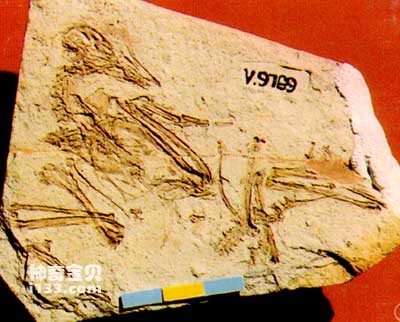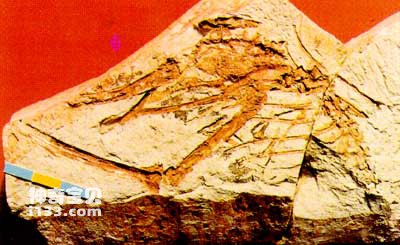In July 1990, a research team led by Dr. Jin Fan, a young paleoichthyologist from the Institute of Vertebrate Paleontology and Paleoanthropology, Chinese Academy of Sciences, was traveling through mountains and rivers in the Chaoyang area of western Liaoning to collect fish fossils extensively. There is a recently graduated master's degree in the team named Zhou Zhonghe, who is responsible for the research on the sturgeon fossils discovered by the research team. The midsummer sun scorches the earth as hot as fire, but several young scientists still persevere sweating profusely every day. In a small river ditch less than 20 kilometers away from where the Three Towers Chinese Bird was discovered, Zhou Zhonghe discovered a seemingly inconspicuous fish fossil. But his discovery is very important, because this fossil is a fish of the family Plutidae and the earliest ancestor of the modern Yangtze River paddlefish.
After the field work was over, Zhou Zhonghe was still thinking about the place where the paddlefish fossil was unearthed. In mid-September, when the weather got a little cooler, he went to the desolate ravine again, hoping to find more and better paddlefish fossils.
Incredibly, no fossils of the family Plutonidae have ever been found. However, the patient Zhou Zhonghe did not give up easily and continued to search day after day. His hard work paid off, and in the end, he actually dug out two fairly well-preserved bird fossils from the hard marl!

Chinese bird
The two fossils were later identified by researcher Hou Lianhai, an paleontological expert at the Institute of Vertebrate Paleontology and Paleoanthropology, and believed to be two different types of birds. One specimen was particularly complete, with the entire skull preserved, making it the most complete bird fossil known from the Early Cretaceous strata in the world at that time.
The Institute of Vertebrate Paleontology and Paleoanthropology, Chinese Academy of Sciences, paid special attention to this discovery and provided the strongest financial and personnel support for further excavation and research work. In the following two years, the excavation team composed of scientific researchers such as Zhou Zhonghe, Hou Lianhai, Jin Fan and Zhang Jiangyong collected nearly 20 fossils from the same location, of which at least 5 specimens preserved skull components. Research has shown that these fossils include at least three different types. The most complete fossil is named Cathaynis, and other specimens include Chaoyangornithes and Chinaorniths. The research also confirmed that Sinensis and Sinensis were produced in the same stratigraphic layer and were of almost the same age, about 130 million years ago, making it the oldest known bird in the world at that time except Archaeopteryx. of birds. It was unprecedented at the time that such a large number of bird fossils could be discovered at such an early age, and that they were well preserved.

sunrise bird
The unexpected discovery of bird fossils and their rapid expansion after that completely changed Zhou Zhonghe's life. He quickly shifted the main direction of his research to ancient birds and achieved a series of results.
In June 1992, Zhou Zhonghe participated in the Third Academic Symposium on Avian Paleontology and Evolution held in Frankfurt, Germany. The relevant papers he read at the meeting aroused strong responses from the participants. At the request of the organizers of the conference, he also made a more detailed report. Scientists from various countries have spoken highly of these discoveries in western Liaoning, China. Many scientists believe China's discovery is the most compelling focus of the conference. After the meeting, a reporter from a German broadcasting company invited Zhou Zhonghe and some other scientists to conduct a special interview. Later, Professor Olson of the Smithsonian Museum of Natural History in the United States lamented in a letter to Dr. Hoffman of the institute: "The discovery of bird fossils from the Early Cretaceous in China may be called The most important discovery of a bird since the discovery of Archaeopteryx.”
animal tags:
We created this article in conjunction with AI technology, then made sure it was fact-checked and edited by a Animals Top editor.